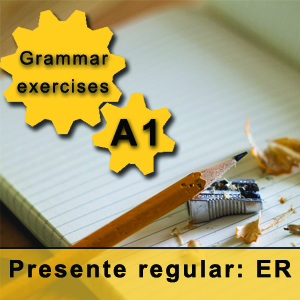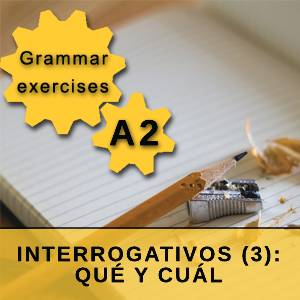Spanish regular present tense (-ER)

¡Menudo palo!
February 6, 2017
Algo, algún, alguna vez
February 12, 2017Usa el enlace a continuación para descargar el pdf con este ejercicio de gramática.
The conjugation of verbs in Spanish is easier than it may seem. There are three groups of verbs (conjugations), and all the verbs within one group are conjugated in the same way. The three categories depend on the ending of the verb: there are verbs ending in -ar (soplar, trabajar…), verbs ending in -er (comer, beber…), and verbs ending in -ir (vivir, describir…). Today we are going to learn the Spanish present tense of the regular verbs ending in -er.
The present tense is the most basic tense. It is used to speak about present events, usual actions, things happening in the near future and universal facts. It is very easy to learn and it is the base for the rest of tenses.
Although there are irregular verbs in Spanish, the endings of the verbs in the Spanish present tense are the same for all verbs within a conjugation, regardless of their irregularities. Irregularities often occur in the root of the verb. Learn the endings we will show you below, and you will use them for every verb ending in -er.
The Spanish present tense conjugation is very easy to form: remove the ending of the verb (-er) to find the root of the verb, and then add the following endings to it:
| Subject | Root | Ending | Conjugation |
| Yo | Beb- | -o | Yo bebo (beb-o) |
| Tú | -es | Tú bebes (beb-es) | |
| Él | -e | Él bebe (beb-e) | |
| Nosotros | -emos | Nosotros bebemos (beb-emos) | |
| Vosotros | -éis | Vosotros bebéis (beb-éis) | |
| Ellos | -en | Ellos beben (beb-en) |
Examples of regular verbs ending in -er are: comprender (to understand), aprender (to learn), toser (to cough), leer (to read), comer (to eat), beber (to drink), correr (to run)…
Now it’s your time to practice! Download this grammar exercise, and use the Spanish present tense with regular verbs ending in -ir. You will soon discover how easy it is
If you want to have a handy reference book Spanish grammar, order our Spanish grammar book, which explains the all you need to know about the Spanish grammar with schemes and graphics. And, if you want to learn faster and immerse in the Spanish culture, discover our Spanish courses in Madrid.





